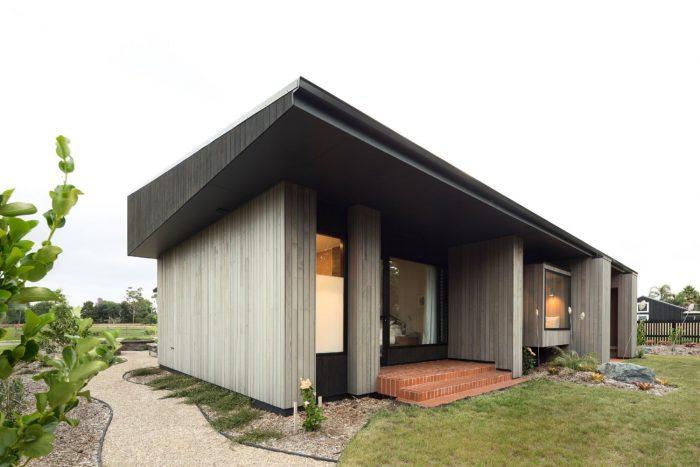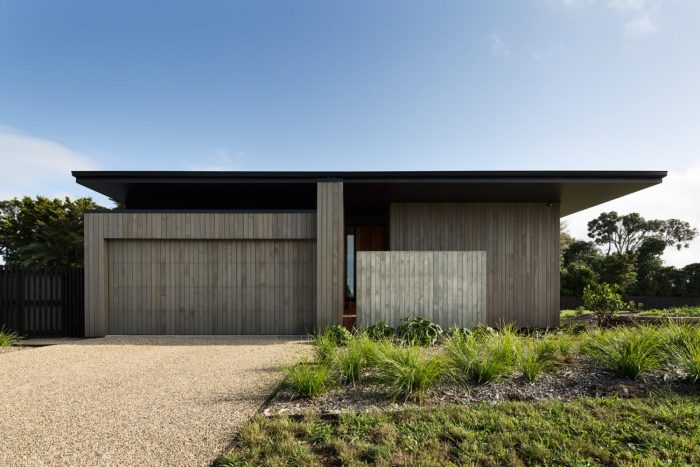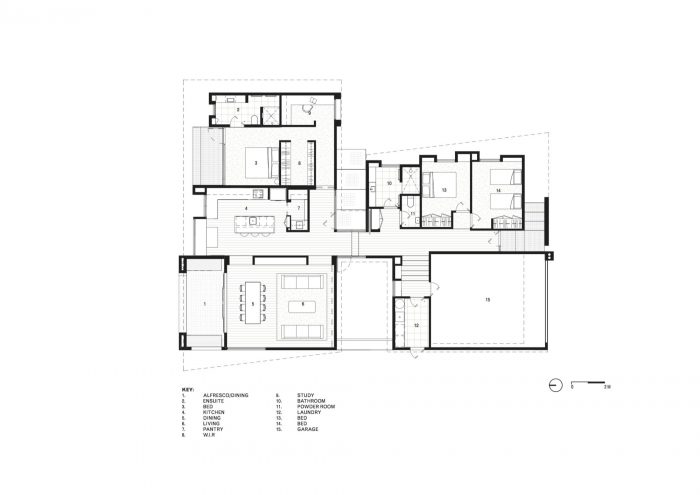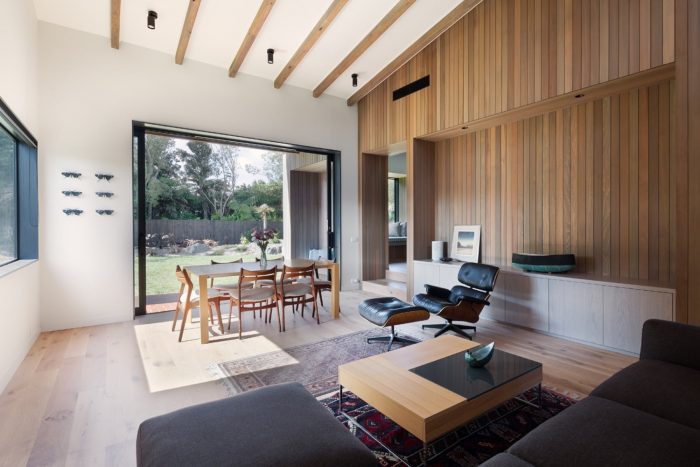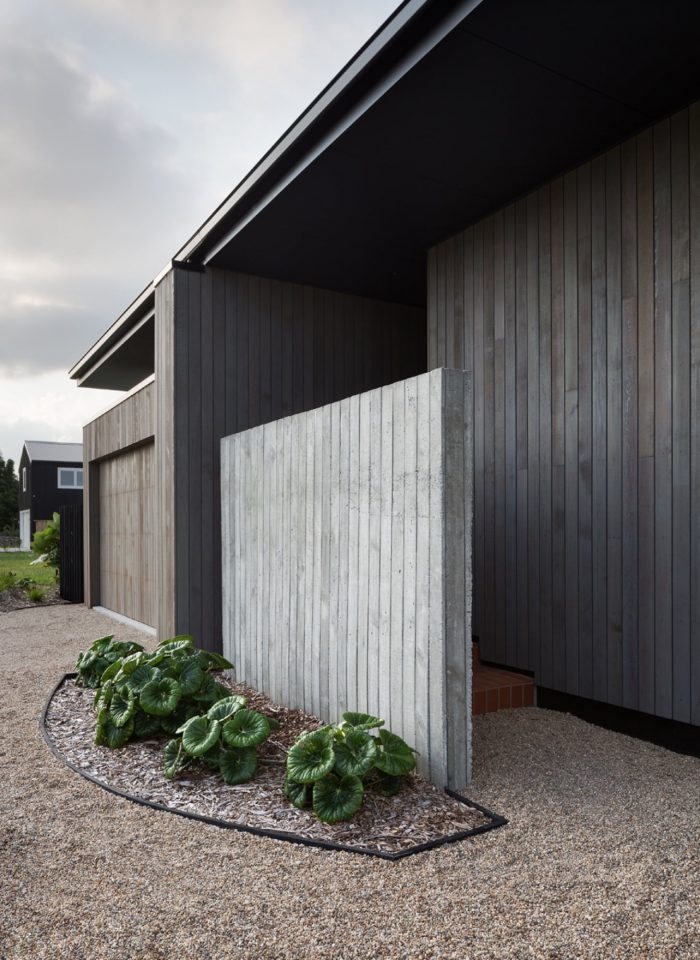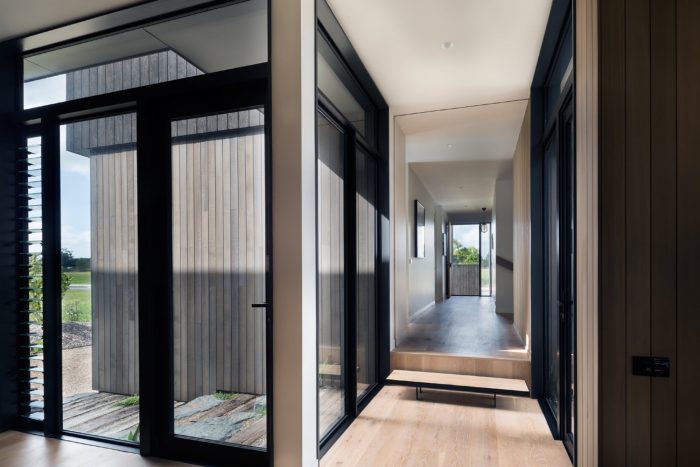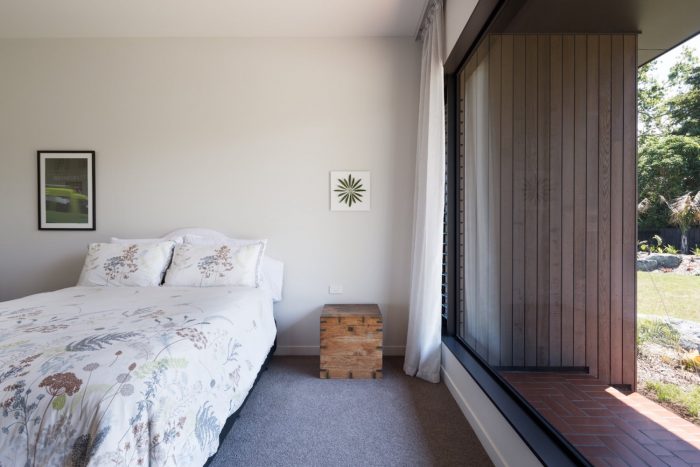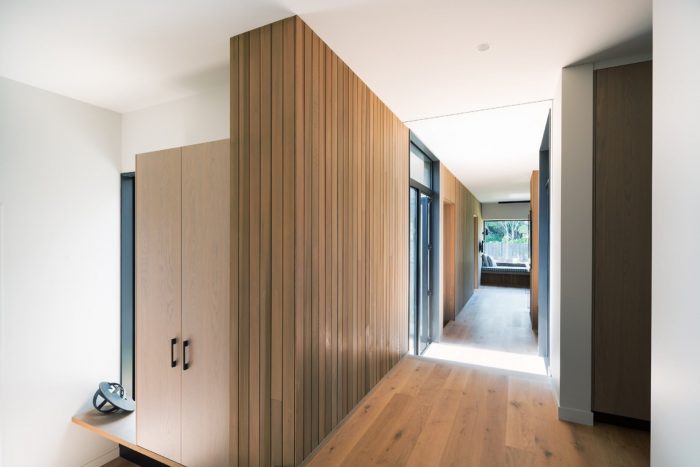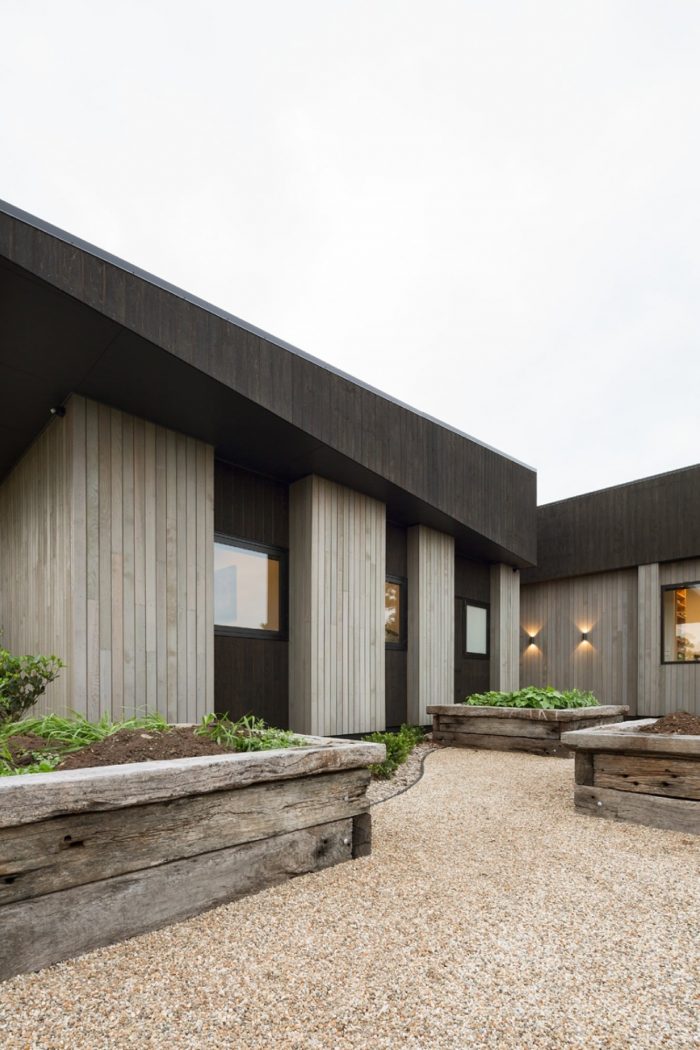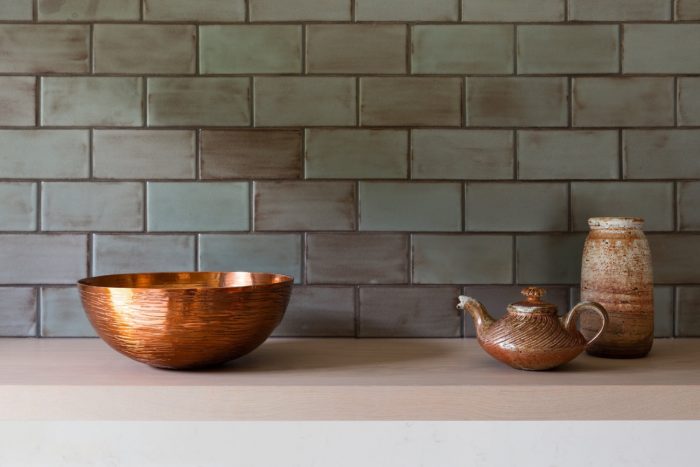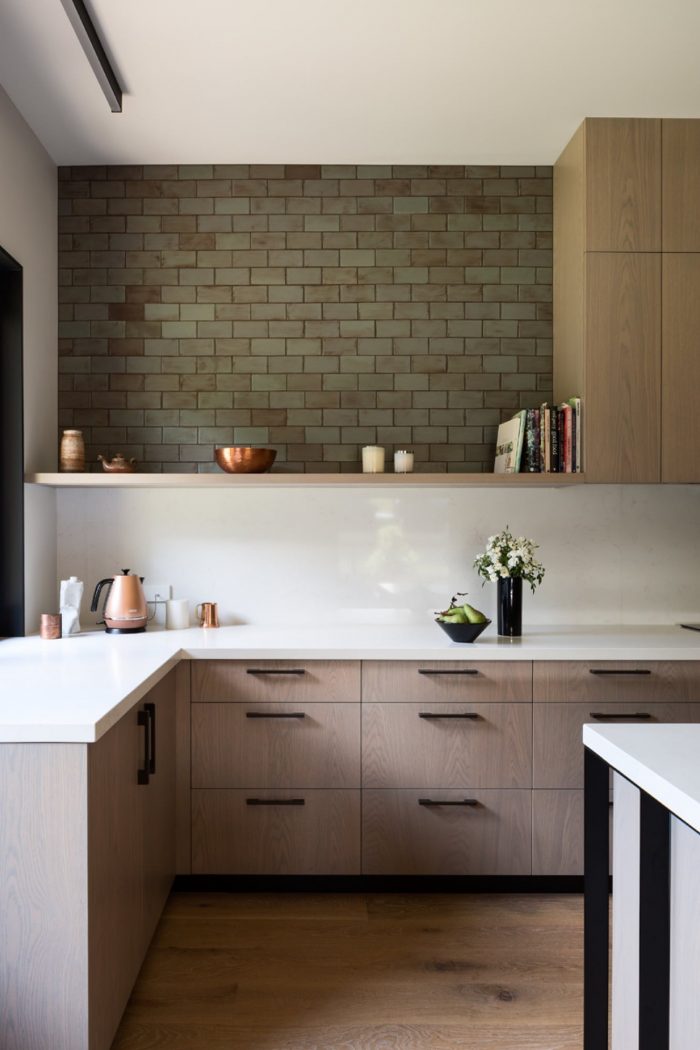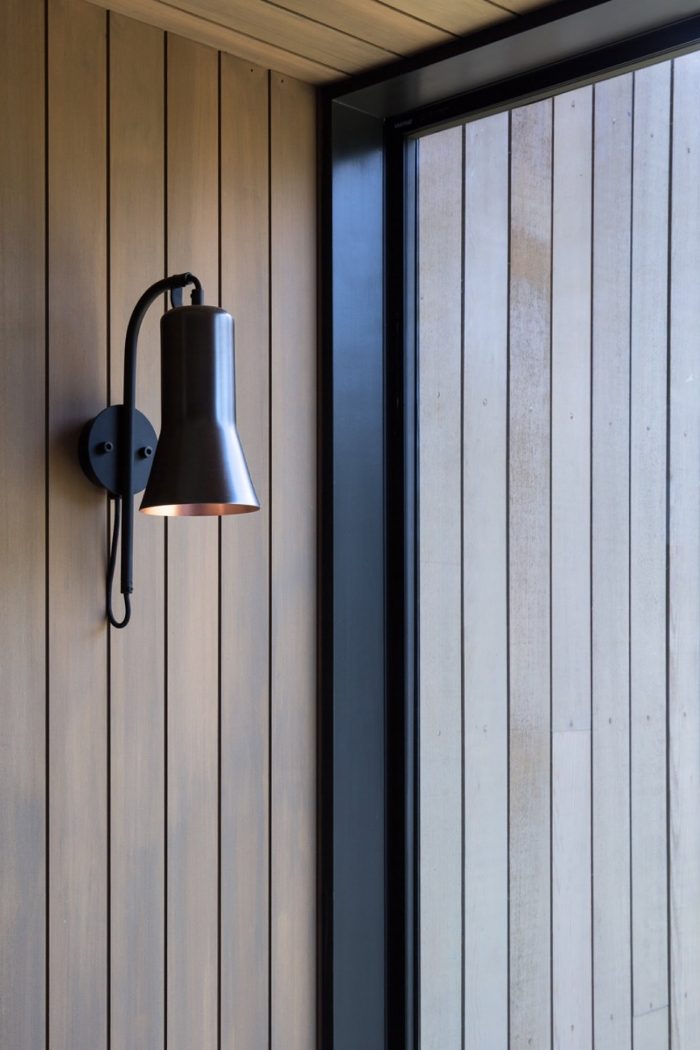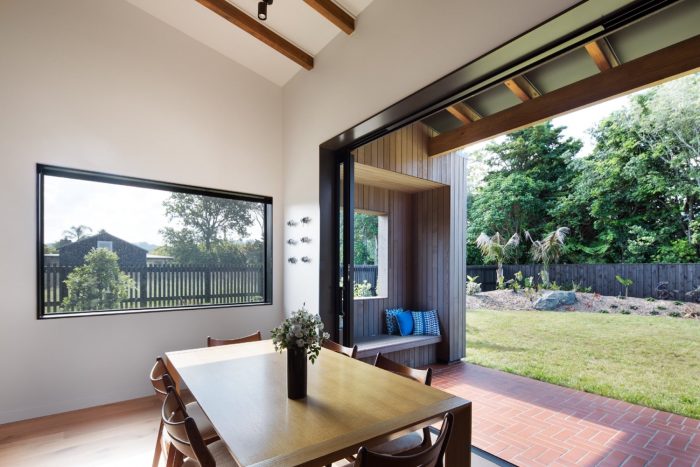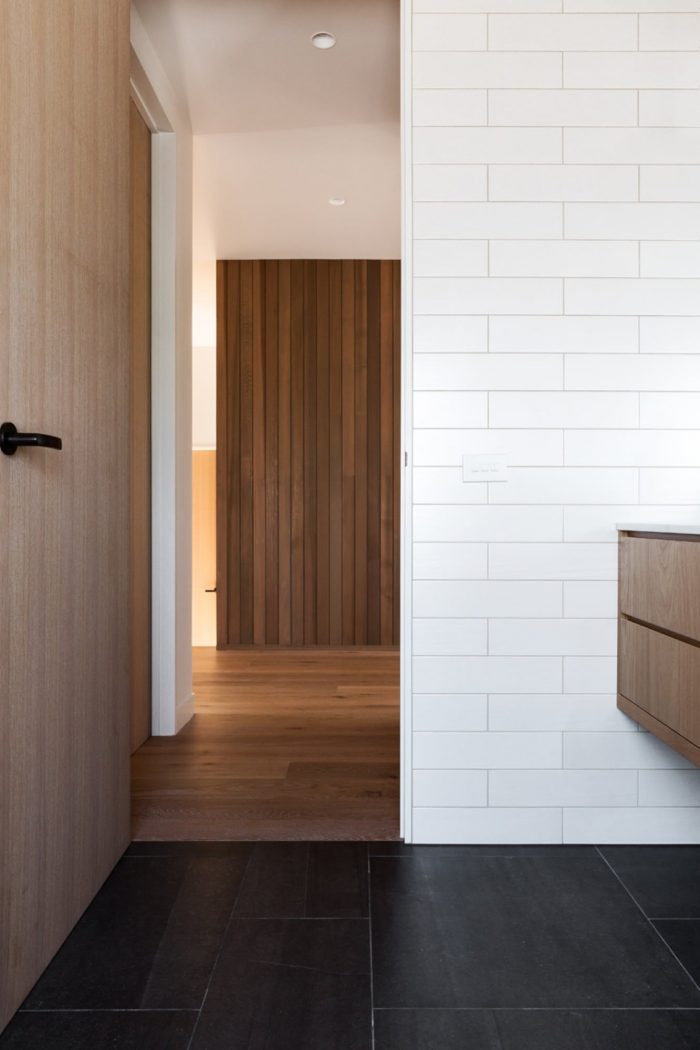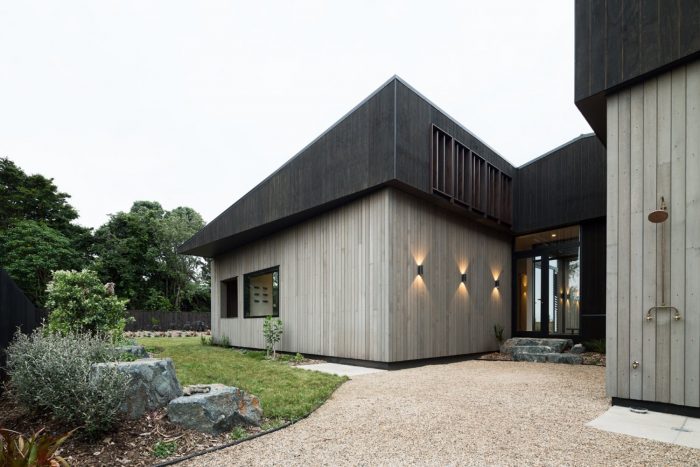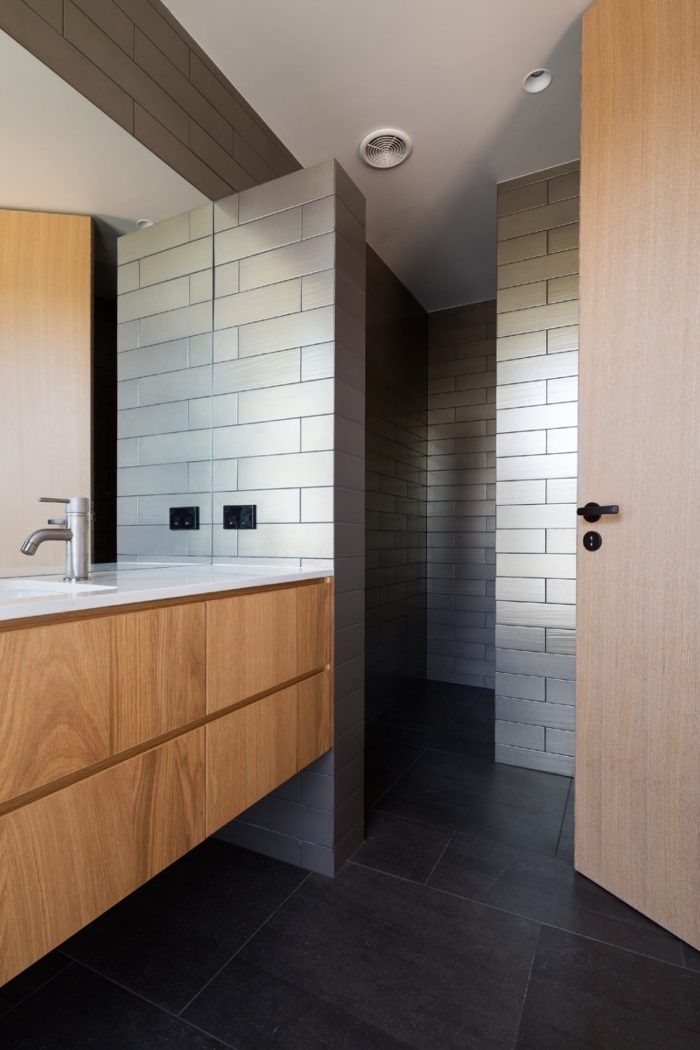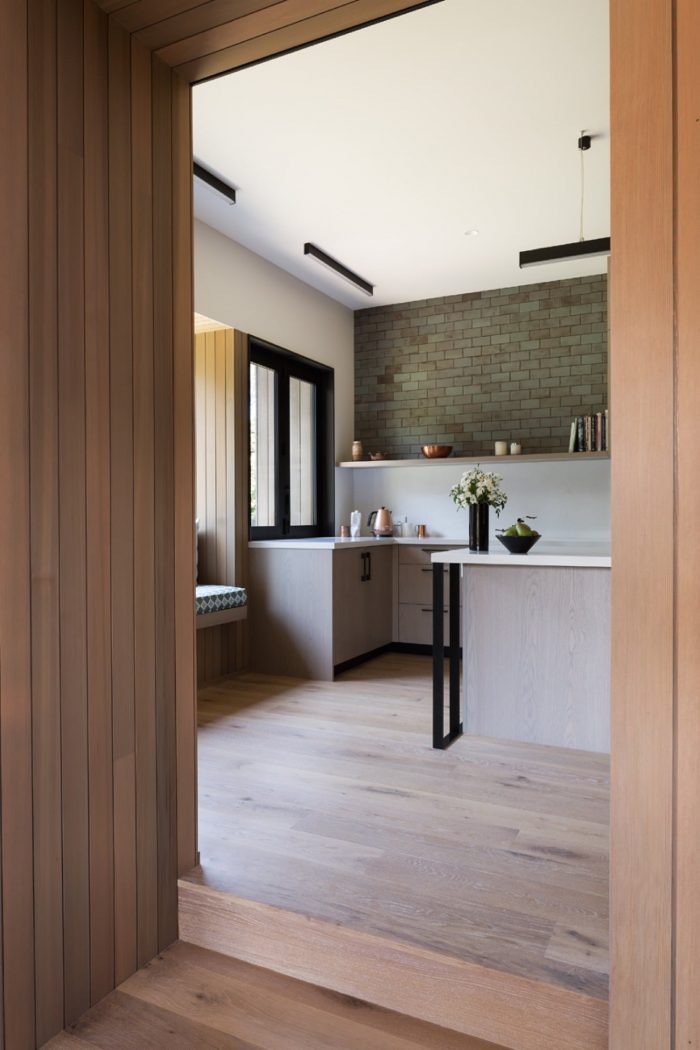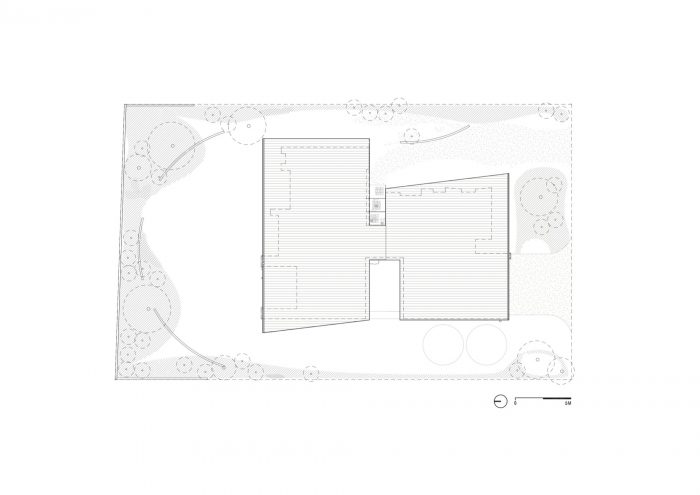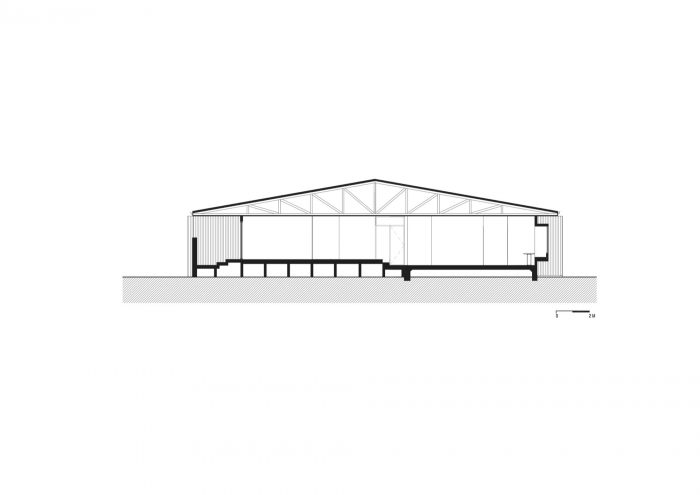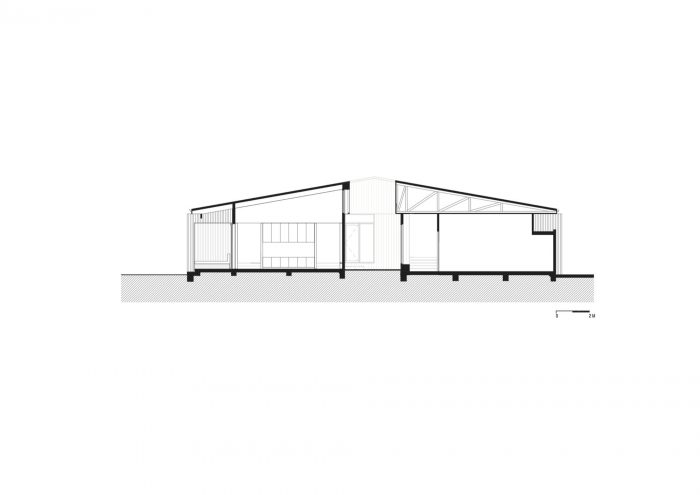这座新房子位于离奥克兰不到一小时车程的新小区,是第一批建在平地上的房子之一,它被分割成大小合适的半郊区半沿海地区,曾经是牧地。
Located in a new subdivision less than an hour from Auckland this new house was one of the first built on a flat site that has been split up to create well sized semi-suburban semi-coastal sections on what was once pastoral land.
面对没有邻居的平坦空地,设计策略是预测即将到来的环境,同时创造一种远离街道的退缩感。我们还希望尊重客户的隐私,并提供一个从前到后的分层分隔。
Faced with a flat vacant lot with no neighbours the design strategy was to anticipate the soon to be context and also to create a sense of retreat from the street. We also wanted to respect the client’s privacy and provide a layered separation from front to back.
我们建议使用阴影作为设计材料,创造一个超大的深色屋顶,放在厚厚的雪松包覆的墙壁上。屋顶可以保护人们不受外界影响,大雨是很常见的,但同时延伸的黑色屋檐和长长的影子也是保护性的。从室内看,黑色的屋檐框住了景观视野,增强了周围绿色植物的外观。
We proposed the use of shadow as a design material, creating an oversized dark roof that rests on thick cedar clad walls. The roof protects from the elements, heavy downpours are common, but also the extended black eaves and long shadows are protective in nature. From the interior the black eaves frame the landscape views and enhance the appearance of the surrounding greenery.
当你从汽车上接近这个分区时,房子看起来是一个简单的屋檐形式,参考了新西兰早期现代主义建筑群的作品。从街上看,屋顶被雪松包覆的墙壁撑起,前门被浇筑好的混凝土墙挡住。然而,在房子里走动,很明显,房子是一个倾斜的屋檐形式,计划被分成两部分,前半部分是车库、街道入口和客人卧室,而后半部分是生活空间和业主卧室。位于屋顶最高点的玻璃连接件将两翼连接起来。玻璃连接还提供了,在东边,一个次要的花园入口,在西边,一个遮蔽的晚间户外用餐空间。
As you approach the subdivision from a car the house appears as a simple gable form, referencing the work of the early New Zealand modernist Group Architects. From the street the roof is held up by the cedar clad walls and the front door is screened by a poured in place concrete wall. Moving through the home however it is apparent that the house is a spilt gable form and the plan is dived in two, the front half is the garage, street entry and guest bedrooms while the rear half is the living spaces and owners bedroom. A glazed link connects the two wings located at the highest point of the roof. The glazed connection also provides, to the east, a secondary garden entry and, to the west, a sheltered evening outdoor dining
space.
居住区被安排在一堵宽阔的雪松墙的两侧,这堵墙从花园一直延伸到后面的入口。这堵墙作为一个门槛,将厨房与起居室和用餐空间分开。这些空间也设置在比厨房更低的水平上,所以进入时要穿过宽大的雪松墙,然后走几步,通过水平变化和材料而不是墙壁和门来创造分离。 与其他地方的平顶相比,起居室有一个高的耙形天花板,并有暴露的椽子。高墙为业主的艺术收藏品创造了空间,同时也给人以置身于有顶棚的室外房间的感觉,这一点通过通往露天起居室的玻璃窗得到了加强。
The living areas are arranged either side of a wide cedar lined wall that continues from the garden to the rear through to the entry. This wall acts as a threshold separating the kitchen from the living and dining spaces. These spaces are also set on a lower level to the kitchen, so to enter you pass through the wide cedar wall and down a few steps creating separation through level change and material rather than walls and doors. A high raked ceiling with exposed rafters to the living room as opposed to the flat ceilings found elsewhere. The high walls create room for the owner’s art collection but also imparting the sense of being in a covered outdoor room, which is enhanced by the glazed opening leading to an al fresco sitting room.
屋檐下的房子有一个变化的规模;从街上看,房子就像一个紧凑的部件组合。然而,当你进入时,规模会随着你的移动而扩大,并蔓延到一个青翠的花园。在这个空间里,主人可以退缩,与花园相连,但被屋檐遮挡。
House Under Eave has a shifting scale; from the street the house appears as a compact assemblage of parts. On entering however the scale expands as you move through the plan and spills out to a verdant garden. It is in this space the owner can retreat to, connected to the garden but sheltered by the eave.
Architects: MRTN Architects
Area : 240 m²
Year : 2016
Photographs :Anthony Basheer
Manufacturers : Inlite, Ross Gardam, Vola, MIDDLE EARTH, RK
City:POINT WELLS
Country:New Zealand


